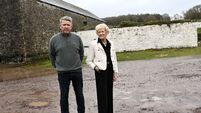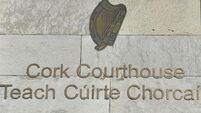Horror in Homs as UN slams Assad regime
Medical supplies are running out and at least three field hospitals have been hit. Rooms are full of corpses while in the streets, wounded people are bleeding to death as it is too dangerous for rescuers to bring them to safety.
Yesterday alone, a further 75 people were killed.
The New York-based Human Rights Watch provided this picture of nearly a week of carnage in Homs from talking to several witnesses inside the city, now the focal point of the 11-month-old uprising against president Bashar al-Assad’s rule.
A senior US state department official said the international community may be forced to “militarise” the crisis in Syria unless Assad stops the onslaught on his people.
The official said that while the White House wants to exhaust all its diplomatic options, the debate in Washington has shifted away from diplomacy and towards more robust action.
Meanwhile, as the Syrian National Council meets in Qatar ahead of Sunday’s meeting with the Arab League, UN secretary general Ban Ki-moon condemned the “appalling brutality” of the Assad regime.
Russia and China vetoed the resolution, which called on Assad to step down in a move that opposition groups said gave the leader a “licence to kill”.
In his first comments since the veto, the UN chief said: “I deeply regret that the Security Council has been unable to speak with one clear voice to end the bloodshed.
“The failure to do so is disastrous for the people of Syria. It has encouraged the Syrian government to step up its war on its own people.
“Thousands have been killed in cold blood, shredding President Assad’s claims to speak for the Syrian people.”
Ban predicted the government’s artillery assault on the protest city of Homs “is a grim harbinger of worse to come”.
He criticised the world for failing to stop the Syrian government from attacking its people, asking: “How many deaths will it take to stop the slide into civil war and civilian strife. For too many months we have watched this crisis deepen.”
Since the military operation against opposition neighbourhoods was laun-ched last week, government forces have fired hundreds of shells and mortar bombs, killing more than 300 people and wounding hundreds more, including women and children, according to Human Rights Watch.
Government forces have taken over Homs University residences to use as a firebase and blockaded areas of the city, preventing people from getting out and food, medicine and other supplies from getting in, according to the report.
“Injured people are dying because we cannot treat them. There are still people in the street who are injured. They are missing body parts. We cannot pull them in because of the shooting. They will die in the street,” it quoted one witness named Karim, a resident of Khalidiya neighbourhood, as saying.
Homs, an industrial city in western Syria which has a population of nearly one million, is the country’s third largest and has a history stretching back to ancient times.
It has been to the forefront of the uprising against Assad and has seen frequent protests and repression since March.
The latest bout of bloodshed began when security forces at checkpoints and on rooftops opened fire on a protest near the al-Zahire mosque last Friday, according to Hani, a witness from Baba Amro district. Soon after, shelling began.
In Khalidiya, fighters of the rebel Free Syrian Army seized a checkpoint and residents took to the streets to celebrate — provoking an intensive barrage that lasted for several hours, witness Samer said.
Wasim said Baba Amro, Khalidiya and Wadi Iran were all shelled.
“I could hear the sound of women and children screaming while running on the streets trying to escape the shelling,” he said in the Human Rights Watch report.
He and others tried to rescue wounded people but came under fire as they tried to retreat using secret passages. They were forced to stay in hiding and the 10 wounded they had picked up died from loss of blood.
A doctor at al-Waer hospital said medical supplies had run out. On Monday, 18 wounded patients, including a 13-year-old, died of complications in the hospital when the electricity was cut off, he said.
Mahmud, a Baba Amro resident, said: “There is no escape or safe passage from the area and there is no safe shelter inside the area from the rockets and shells.
“There is no bread, no medication and no nutritional supplies, and after a field hospital was targeted, we lost several of our medical staff.”
Snipers targeted any moving object, he said.
“Many of the wounded have very serious injuries — they lost their limbs, or eyes, had serious wounds to the body.”
Human Rights Watch said the indiscriminate shelling of populated areas which resulted in civilian casualties was a serious human rights violation.
“This brutal assault on residential neighbourhoods shows the Syrian authorities’ contempt for the lives of their citizens in Homs,” said Anna Neistat, Human Rights Watch emergencies director. “Those responsible for such horrific attacks will have to answer for them.”














